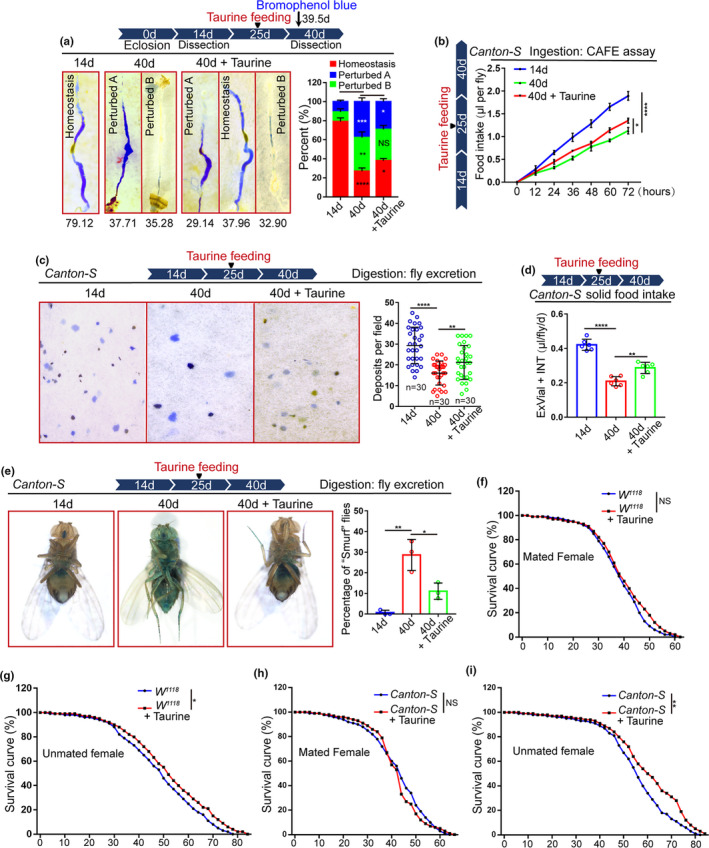FIGURE 3.

Taurine prevents the age‐related functional decline of the Drosophila intestine. (a) Representative imagines and quantification of the percentage of intestinal acid–base homeostasis in flies at 14th and 40th day, with and without taurine. N = 90 flies per group. (b) Food intake of flies measured using the CAFÉ assay. Mean ± SD is shown. Error bars show the SD of three independent experiments. (c) Excretion from flies was treated with Bromophenol blue. Representative imagines of deposits and quantification of deposits with indicated treatment are shown. Each sample contains three independent experiments. Excretions are quantified for 30 fields in each group of 12 flies. (d) Measurements of solid food intake in Drosophila are shown. Flies of 14‐day, 40‐day, and 40‐day with Taurine supplementation were subjected to solid food in the presence of blue dye. Blue dye was extracted and quantified via spectrophotometry. Data presented as mean + SD, from 6 separate experiments. (e) Representative images and quantification of the percentage of “Smurf” flies from 14‐day, 40‐day, and 40‐day with Taurine supplementation after consuming a non‐absorbed food dye. Each sample contains three independent experiments. (f–g) Survival curves (%) of female (f) and male (i) W1118 flies with and without 0.05 mM of taurine supplementation. 3 independent experiments were conducted. (h–i) Survival curves (%) of female (h) and male (i) Canton‐S flies with and without 0.05 mM of taurine supplementation. 3 independent experiments were conducted. Data information: Scale bars represent 10 µm. DAPI‐stained nuclei are shown in blue. Error bars represent SDs. Student's t tests, *p < 0.05, **p < 0.01, ***p < 0.001, ****p < 0.0001. non‐significance (NS) represents p > 0.05
